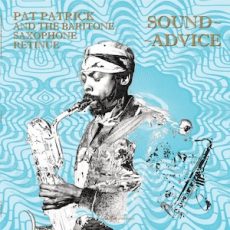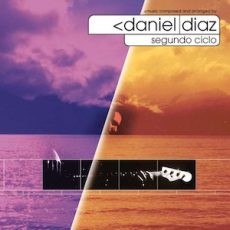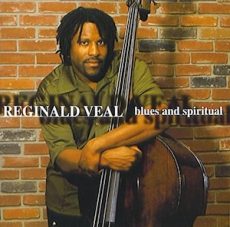
Requisites
Wheelin’ & Dealin’ ~ Frank Wess, John Coltrane, Paul Quinichette, Mal Waldron, Doug Watkins and Arthur Taylor | By Eddie Carter
This morning’s album from the library is an excellent 1957 jam session by Frank Wess, John Coltrane, Paul Quinichette, Mal Waldron, Doug Watkins and Arthur Taylor. Wheelin’ & Dealin’ (Prestige PRLP 7131) is an outstanding album featuring an impressive team of musicians. The ensemble consists of John Coltrane and Paul Quinichette on tenor saxophones, Frank Wess on flute (tracks: A1, B1, B2) and tenor saxophone (track: A2), Mal Waldron on piano, Doug Watkins on bass, and Arthur Taylor on drums. The copy of this album that I own is the 2025 Worldwide Stereo audiophile reissue (Craft Recordings CR00862).
The album opens with Things Ain’t What They Used To Be by Mercer Ellington and Ted Parsons. Frank’s flute sets a welcoming tone for the sextet’s laid-back melody before moving into a relaxing first solo. Paul soars with graceful ease, then John follows him effortlessly with a mellow reading, then the saxophones revisit the sequence. Mal responds with a breezy interpretation, and Doug takes a quick walk, leading to the closing chorus. Wheelin’ by Mal Waldron takes off with the ensemble’s spirited theme. Coltrane leads the way with an energetic statement. Quinichette lets loose next, then Wess wails on the tenor saxophone. Waldron delivers a lengthy, vigorous performance. Taylor adds a brief footnote that leads to the ensemble reprising the theme and a rousing finish.
Side Two opens with Robbins’ Nest by Illinois Jacquet, Bob Russell, and Sir Charles Thompson, a tribute to DJ Fred Robbins. Frank, returning on flute, gently guides the ensemble through the melody, then enters like a cool breeze for the first solo. Paul then offers some down-home cooking; John makes every note count in a relaxed interpretation. Mal then keeps the mood easygoing, and Doug takes a brief walk before the closing ensemble. Mal Waldron’s Dealin’ starts with the sextet’s collective melody; Waldron leads with an inviting opening solo. Wess, on flute, produces a warm, fluid sound. Quinichette steps in for a few relaxing choruses, then Coltrane flows with fresh, creative ideas. Wess makes a short return on tenor sax, and Waldron has the last word before the group reunites to close the set.
The dynamic combination of Coltrane and Quinichette on tenor saxophones infuses the sextet with vibrant energy, establishing an engaging lead voice for the group. Coltrane, poised on the threshold of stardom, plays with deep emotion and a sense of adventurousness, while Quinichette’s silky, relaxed approach pays homage to Lester Young’s signature sound. Frank Wess further elevates the ensemble’s texture, seamlessly alternating between flute and tenor sax; his flute contributions, in particular, bring a light, breezy quality to the arrangements. Supporting them, the rhythm section of Waldron, Watkins, and Taylor lays down a consistent, swinging foundation, artfully mixing delicacy with spirited drive to enhance each soloist’s performance throughout the album.
Bob Weinstock supervised the first session, and Rudy Van Gelder was at the recording console. Kevin Gray did an excellent job mastering this audiophile reissue from the original tapes at Cohearant Audio. The sound quality truly shines, offering a spacious soundstage and vibrant clarity that makes you feel like the musicians are right in front of you. The record is pressed on 180-gram Virgin Vinyl and is silent until the music begins. If you’re craving a fantastic Hard-Bop album, I highly recommend checking out Wheelin’ & Dealin’ by Frank Wess, John Coltrane, Paul Quinichette, Mal Waldron, Doug Watkins, and Arthur Taylor on your next record-shopping trip. It’s an outstanding album by the talented group that later became The Prestige All-Stars, and I believe it will become a beloved favorite in the libraries of both new and seasoned jazz fans for many years to come!
Things Ain’t What They Used To Be – Source: JazzStandards.com © 2025 by Edward Thomas Carter
Wheelin’ & Dealin’: 1957 | Frank Wess, John Coltrane, Paul Quinichette, Mal Waldron, Doug Watkins, Arthur Taylor
For the serious collector of jazz… #Jazz #Classic #Collectible #Music #Notorious
More Posts: bass,choice,classic,collectible,collector,drums,flute,history,instrumental,jazz,music,piano,saxophone

EITHER/ORCHESTRA
In the decades since the Either/Orchestra debuted on December 17, 1985 at the Cambridge MA Public Library, the group has made over 1000 performances in 38 of the United States and 12 foreign countries, as well as releasing a dozen albums and being nominated for a Grammy, winning five Boston Music awards and numerous Downbeat Critics Poll placements, among many other honors. From prestigious festivals like Glastonbury Pop and Chicago Jazz to tiny clubs, schools and churches in out of the way places, the group has been “dependably marvelous,” according to the Village Voice.
No obstacles deterred leader Russ Gershon and his intrepid musical explorers from visiting new musical worlds – until the Covid pandemic. The band’s most recent performance was in December of 2019 at Tufts U., with one of their distinguished Ethiopian collaborators, vocalist Teshome Mitiku. But now, they’re coming back!
To celebrate the exact 40th anniversary of their first show, the Either/Orchestra returns to the stage not a mile from where they started. The E/O began playing the Regattabar when the club was band new in the ’90’s. There is no better and more appropriate venue for them to inaugurate their fifth decade.
The E/O will be making selections from their vast catalog of originals and original arrangements of classic and obscure jazz, as well as dipping into their unparalleled repertoire of Ethiopian music in honor of their upcoming release, éthiopiques 32: Nalbandian the Ethiopian.
Their second release on the legendary éthiopiques series features music by Nerses Nalbandian, a teenage refugee of the Armenian genocide who rose to become music director of Emperor of Ethiopia Haile Selassie’s National Theater in Addis Ababa. Nalbandian’s interest in American music helped set the stage for the birth of the modern Ethiopian pop music which has bewitched music aficionados the world over the past couple of decades. His music has seldom been played since the totalitarian revolution which deposed Haile Selassie in 1974, and the E/O was asked by the Nalbandian family and éthiopiques producer Frances Falceto to reconstruct and play it at the National Theater of Ethiopia. The album is a record of that labor of love.
E/O personnel:
Tom Halter | trumpet
Dan Rosenthal | trumpet
Joel Yennior | trombone
Sam Spear | alto sax
Russ Gershon | tenor sax
Charlie Kohlhase | baritone sax
Alexei Tsiganov | piano
Rick McLaughlin | bass
Brooke Sofferman | drums
Vicente Lebron | congas
Cover: Sold Out
More Posts: adventure,bandleader,bass,club,congas,drums,genius,instrumental,jazz,music,piano,preserving,saxophone,travel,trombone,trumpet

Daily Dose Of Jazz…
Pat Patrick was born Laurdine Kenneth Patrick Jr. on November 23, 1929 in East Moline, Illinois, to Laverne and Laurdine Kenneth Patrick. He first learned piano, drums, and trumpet as a child, and then switched to saxophones. He attended and studied music at DuSable High School in Chicago, Illinois where he met fellow students and future musicians bassist Richard Davis and saxophonists John Gilmore and Clifford Jordan. While still in school he was baritone saxophonist for the Regal Theater’s house band.
1949 saw Pat enrolled at Florida Agricultural and Mechanical University, but soon returned to Chicago to study at Wilson Junior College. Around 1950 he first played in one of Sun Ra’s bands as part of a trio and occasionally in Sun Ra’s Arkestra. By 1954 he became a regular member of the band. He moved to New York City in 1961, spent several years in the Arkestra’s communal residences in the East Village and Philadelphia, Pennsylvania.
He went on to play and record with John Coltrane, Blue Mitchell, Mongo Santamaría, Thelonious Monk, and Babatunde Olatunji. In 1972, Patrick co-founded the Baritone Saxophone Retinue, which featured Charles Davis and recorded two albums for Saturn Records.
He toured Europe with Sun Ra in 1970 and 1976, and was part of some other Arkestra performances in that decade, but he also devoted time to teaching at the State University of New York at Old Westbury.>
Baritone and alto saxophonist, bassist, flutist, percussionist and composer Pat Patrick, who is known for his 40-year association with Sun Ra, died from leukemia in Moline on December 31, 1991.
More Posts: bandleader,bass,composer,flute,history,instrumental,jazz,music,percussion,saxophone

Daily Dose Of Jazz…
DANIEL DIAZ 11.22.25
Daniel Díaz Fernández was born on November 22, 1963 in Lanús, Argentina. Living in Paris, France since 1997, he has collaborated with Juan Carlos Cáceres, on the single Tango Negro, and on the album Toca Tango. In 1993 he recorded his first album The Years Alone released by Green Linnet/Xenophile Records. The variety of styles in this album was mentioned by critics. He played most of the parts fretted and fretless basses, keyboards, acoustic and electric guitars, percussion, and more.
He continued this solo career with Segundo Ciclo, recorded in 1997, released by Dutch jazz label Timeless Records in 2002, and Swan Song, released in 2015, always with guest players from around the world. Both albums featured the cosmopolitan jazz-fusion style of the first one.
Since 2005 Diaz has been composing and recording for films, TV and documentaries. He works for French publisher and music library Cezame Music Agency for whom he composed and recorded more than 250 tracks and released 5 albums alone or in collaboration.
Since 2010 his music has been used on many TV documentaries and films. In 2022 his track “Club Recoleta” from the album Elec’ Tango was used on Tom McCarthy’s feature film Stillwater
Bassist, multi-instrumentalist, arranger, composer, Raúl Diaz whose last collaboration in 2023 with Raúl Barboza was on the album Souvenirs Panamericanos, continues to perform and compose.
More Posts: arranger,bandleader,bass,composer,guitar,history,instrumental,jazz,keyboard,music

Daily Dose Of Jazz…
Reginald Veal was born November 5, 1963 in New Orleans, Louisiana. Growing up he began piano lessons at a very early age and received a bass guitar as a gift from his father at the age of eight. He went on to later join his father’s gospel group as the bassist.
Veal studied with the legendary New Orleans bassist Walter Payton, attended Southern University, studying bass trombone with clarinetist Alvin Batiste. From 1985 to 1989 he toured with pianist and teacher Ellis Marsalis as his bassist. During this time he also worked with Pharoah Sanders, Elvin Jones, Charlie Rouse, Hamiet Bluiett, Harry Connick Jr., Terence Blanchard, Dakota Staton, Donald Harrison and Marcus Roberts.
In 1987 he began playing in the Wynton Marsalis Quintet, which became the Wynton Marsalis Septet in 1988. He is the original bassist for the Lincoln Center Jazz Orchestra. Reginald has worked with Ahmad Jamal, McCoy Tyner, Branford Marsalis, Cassandra Wilson, Courtney Pine, Yusuf Lateef, Nicholas Payton, Eric Reed, Dianne Reeves, Junko Onishi, Mark Whitfield and Greg Tardy.
Bassist and multi-instrumentalist Reginald Veal resides on the West Coast where he continues to record and tour.
More Posts: bandleader,bass,history,instrumental,jazz,music


